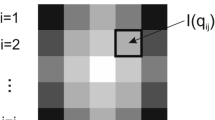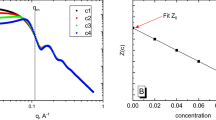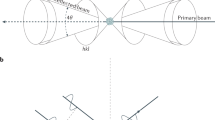Abstract
IF a chromatogram has at the origin four spots, constituting a series of concentrations of a solute (C1, C3, C5, C7) with each member of the series containing an identical amount (C*) of radioisotopic solute (radiomer), colour development after chromatography gives the expected1 near-linear relation between the area of the spot and the logarithm of its concentration, but the corresponding autoradiogram shows spots of equal size (Fig. 1). This phenomenon, which seems to oppose what might be expected intuitively2,3, has a simple explanation.
This is a preview of subscription content, access via your institution
Access options
Subscribe to this journal
Receive 51 print issues and online access
$199.00 per year
only $3.90 per issue
Buy this article
- Purchase on Springer Link
- Instant access to full article PDF
Prices may be subject to local taxes which are calculated during checkout
Similar content being viewed by others
References
Brimley, R. C., Nature, 163, 215 (1949).
Aronoff, S., in Techniques in Radiobiochemistry, 73 (Iowa State Univ., Ames, 1956).
Ponnamperuma, C., Kirk, P., Mariner, R., and Tyson, B., Nature, 202, 393 (1964).
Carslaw, H. S., and Jaeger, J. C., in Conduction of Heat in Solids, second ed. (Oxford Univ. Press, London, 1959).
Crank, J., The Mathematics of Diffusion (Oxford Univ. Press, London, 1964).
Author information
Authors and Affiliations
Rights and permissions
About this article
Cite this article
ARONOFF, S., SUSCHNY, O. Size Relation between a Chromatographic Spot and its Autoradiogram. Nature 216, 1214–1215 (1967). https://doi.org/10.1038/2161214a0
Received:
Published:
Issue Date:
DOI: https://doi.org/10.1038/2161214a0
Comments
By submitting a comment you agree to abide by our Terms and Community Guidelines. If you find something abusive or that does not comply with our terms or guidelines please flag it as inappropriate.



